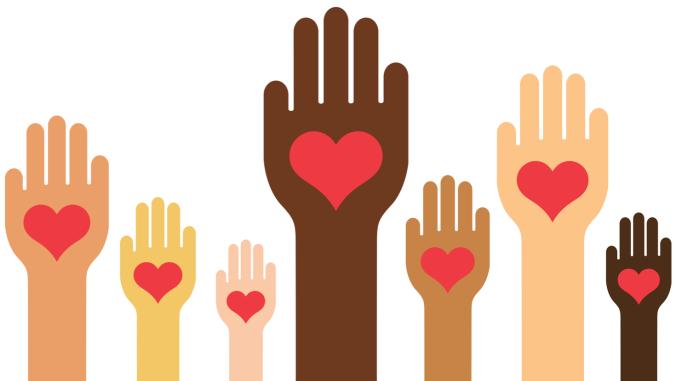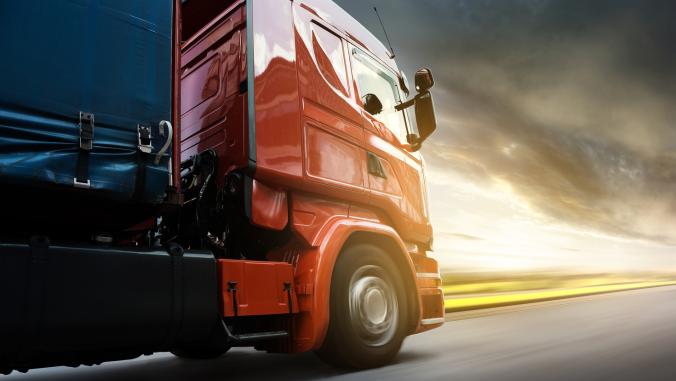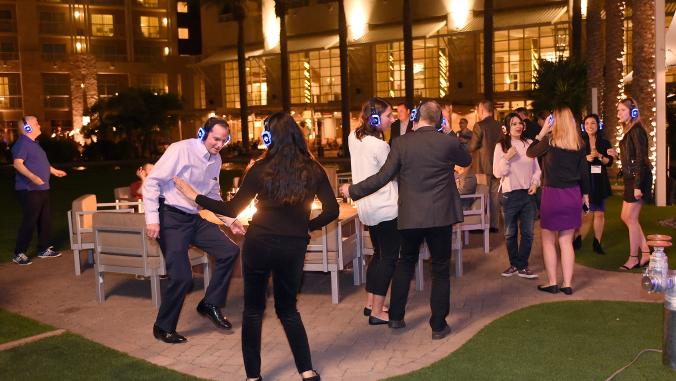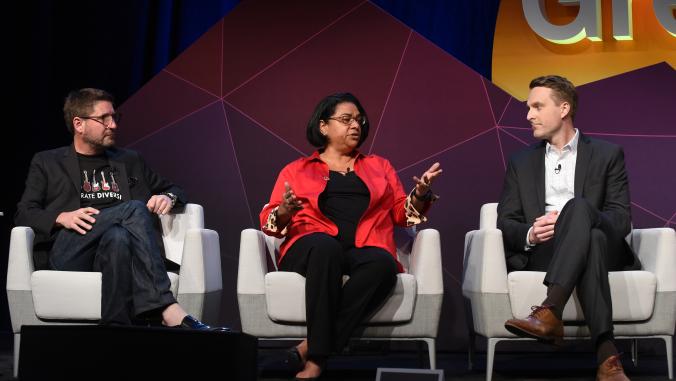Tradition, culture guide Hawaii's 100 percent renewables quest
Three perspectives on “keeping everyone in the same canoe.”

The Hawaiian style of leadership combines respect for tradition, the constant of community and the power of storytelling to reach for the future. That, for them, is "sustainability."
A keeper of cultural wisdom known as "Auntie" Pilahi Paki, a mentor to two prominent speakers (PDF) at the VERGE Hawaii conference last week, once prophesized a time when the world would turn to Hawaii to seek a remedy for turmoil — and the spirit of "Aloha" would be the balm.
You could say that moment has arrived. Last year, the island state passed a bill requiring that 100 percent of its electricity be powered by renewable energy, and it is in the process of driving the transportation sector in the same direction. And weeks ago, in early June, Hawaii became the first state to pass a law committing to the goals and limits of the Paris climate accord, defying the federal government that pulled out of the global treaty setting a pathway to limit global warming to 2 degrees Celsius.
For the 50th state, it’s a matter of independence and survival.
"Energy security is arguably as close to world peace as you can get," said Luis Salaveria, director of the State of Hawaii Department of Business, Economic Development and Tourism. Representing an island state dependent upon imported fossil fuels and food, Hawaii’s legislature recognizes that global warming and rising sea levels threatens to displace businesses and residences and damage the ecosystems they are dependent upon. And it has pledged leadership on strategies to mitigate that impact.
Against a backdrop of beauty — and of king tides that threatened to inundate low-lying roads, docks, boat ramps and other coastal structures — leaders from the government, military, cultural and business sectors gathered in Honolulu last week at VERGE Hawaii to discuss what it will take for Hawaii to meet its deadline for a transition to clean energy. For the 50th state, it’s a matter of independence and survival. For the rest of the world, it is a test of what we may all face in a future marked by climate change. Here are three perspectives on what it will take to make a safe passage towards the future.
Steering the canoe
The first question Hawaii must ask is, "How do we get there?"
Ramsay Taum, the cultural sustainability planner of urban planning firm PBR Hawaii & Associates, opened the conference with an oli, a traditional chant that draws the island’s history. The reflection was particularly fitting during a historic shift for the state.
"We need to get to a shared vision" about the pathway to sustainability, Taum said. "We’re all in the same canoe." Elaborating on the metaphor in a separate interview, he said "everyone who is here needs to acknowledge that we may not agree on everything, but once we get in the canoe [a sustainable future], we have to agree on the destination [a path for the 2045 goal].
"If you’re in the private sector, nonprofit or community, you may have significantly different internal goals that you want to achieve. There is a significant difference between the financial goals of shareholders, many of whom may not even be here on the islands, competing with the social, cultural and environmental issues of people on the ground. And when you have competing interests, it becomes very difficult to get there."
Taum, a student of Pilahi Paki’s, said that the "spirit of Aloha" should guide leaders despite times of discord or disagreement over regulations and business practices. Beyond signifying a greeting or a good-bye, Aloha is an important spiritual concept with specific guidelines for mindfulness:
- Kindness (to be expressed with tenderness)
- Unity (to be expressed with harmony)
- Gentleness (to be expressed with pleasantness)
- Humility (to be expressed with modesty)
- Patience (waiting for the moment)
"Can we hold the vision long enough to allow these multiple generations to catch up?" Taum asked. "It’s going to take leadership, and we can’t rely on our past to define our future. It requires us to be creative […] to look towards a preferred condition and not spend our time trying to fix a bad one."
To that end, Hawaii’s entrepreneurial boom is innovating solutions to the islands’ unique energy needs. As for community, the stakeholders are asking tough questions about equity to ensure sure that renewable energy benefits the underserved.
And to those coming from the mainland to help move the state forward to its 2045 goal, Taum has the following advice: "I'm hoping that we can expand that relational question: How do we improve while we improve others? It's not as much a take as it is to give and receive. And that’s the spirit of 'aloha.'"
Sharpening the toolbox
Reaching Hawaii’s goal of renewable energy in the electricity sector will require unprecedented collaboration between government, utilities, energy producers and residential consumers. That will take work.
A vivid example came in the form of a heated main-stage discussion between Alan Arakawa, mayor of the county of Maui, and Lorraine Akiba, commissioner of the Hawaiian Public Utilities Commission (PUC), over the role of regulation in Hawaii’s energy sector (the mayor advocated for less, while Akiba proposed more). Despite disagreeing vociferously, the two shared a hug after their session.
Regulators, utilities and the government are all dealing with challenges, Akiba explained later in an interview during the conference: "A crisis can be an opportunity for us to be able to achieve more than what we thought."
We need to get to a shared vision (about the pathway to sustainability). We’re all in the same canoe.
Utilities and regulators both have unique roles to play in reaching the state’s renewable energy goals.
"It’s up to utilities to embrace change as well, to become leaders [in renewable energy] and respond to customers, become the conductors of the complex symphony of technology and the integrated grid of the future, the distributed energy network," she said. Utilities must help "the smart cities of the future" harness the power of technology and "integrate the electric sector with other sectors to make a more productive quality of life."
For their part, regulators "must embrace new business models and facilitate utilities to make that transformation," she added. They both must open up the pathway for investment in tech tools, "virtual assets in the toolkit" for clean energy.
Creating a 'test bed'
Joshua Stanbro, the first appointed resilience officer for the city of Honolulu, is just four weeks into his new job. Last November, voters approved the charter amendment that established Honolulu’s Office of Climate Change, Sustainability and Resiliency, which he leads.
"We are lucky because on Oahu, and in Honolulu, people recognize that there are direct, immediate threats from climate change right now," Stanbro said. "The population is fully behind and up to the challenge of creating resilience."
The city is also an inaugural member of the 100 Resilient Cities project, a Rockefeller Foundation-funded project dedicated to strengthening cities around the world to thrive despite 21st-century challenges.
Our job at county and state level is to keep everyone moving in the same direction.
"We are learning at the same time that other cities like Mumbai [in India] and Seattle and others, like Lagos [in Nigeria], are all coming together and learning about the challenges we are facing," he said. Some of Honolulu’s challenges, for which Stanbro is facilitating solutions, are a lack of affordable housing, critical infrastructure and housing that is safe from sea level rise.
"Our job at county and state level is to keep everyone moving in the same direction," he said, and to educate the public to gain their support.
Like Akiba, he advocates for investments in technology — especially for energy storage that can help stabilize the contribution of renewables — to help meet Hawaii’s energy mandate.
"We are a test bed for this in a lot of ways," he concluded. "We have a very small grid, we’re not able to lean on folks from outside our neighboring states. If we can figure it out here, then anyone can do it."
In early June, when Hawaii decided to remain in the Paris Agreement, Honolulu celebrated the return of Hokule’a, a traditional Polynesian sea canoe that circumnavigated the world in three years, fulfilling the metaphor that we are all steering the same canoe on this island Earth.





